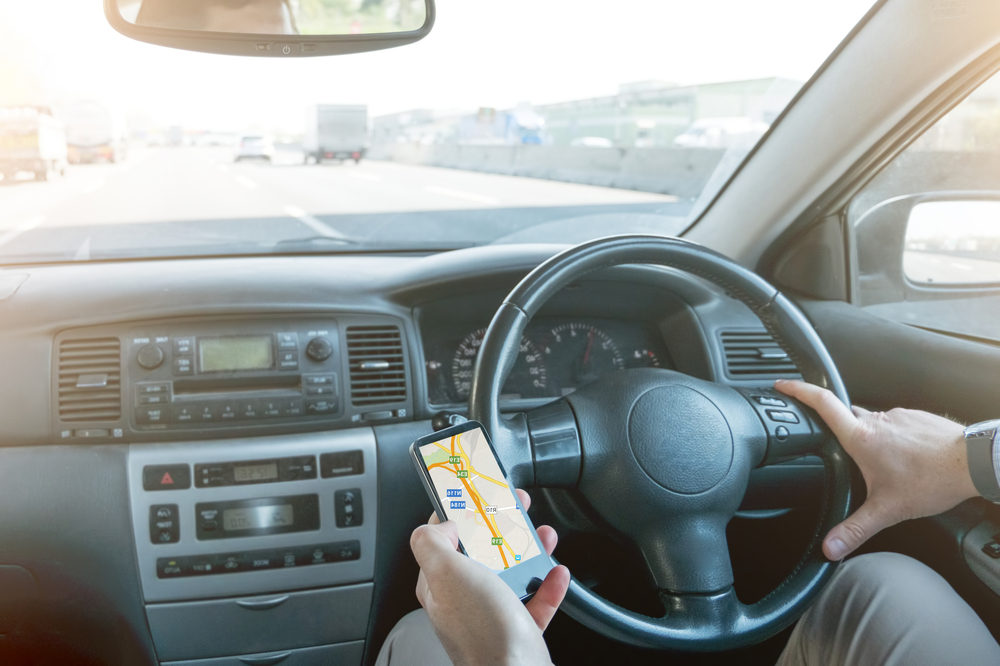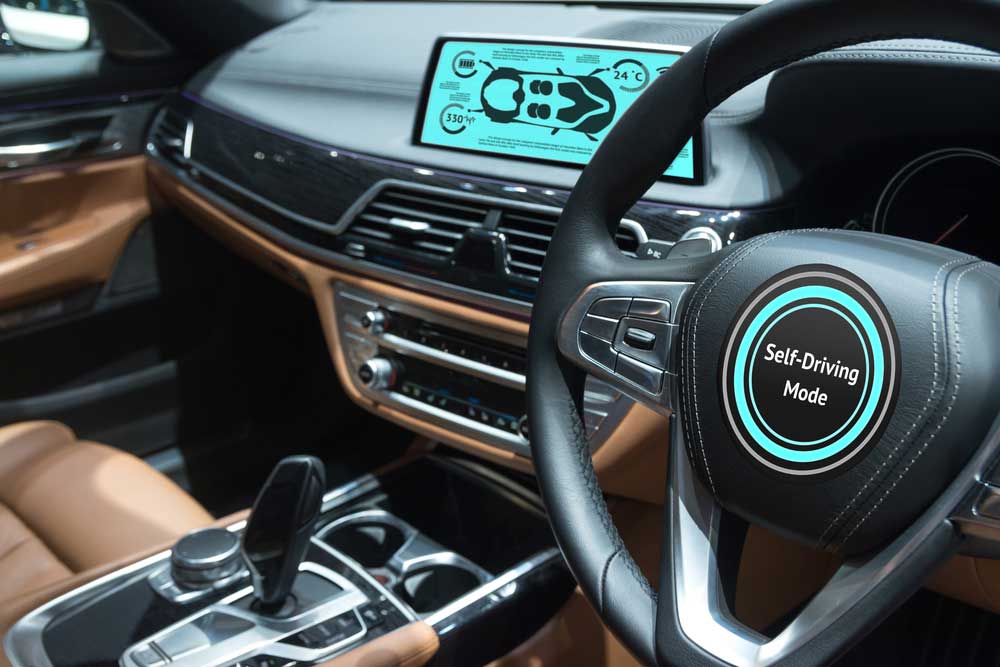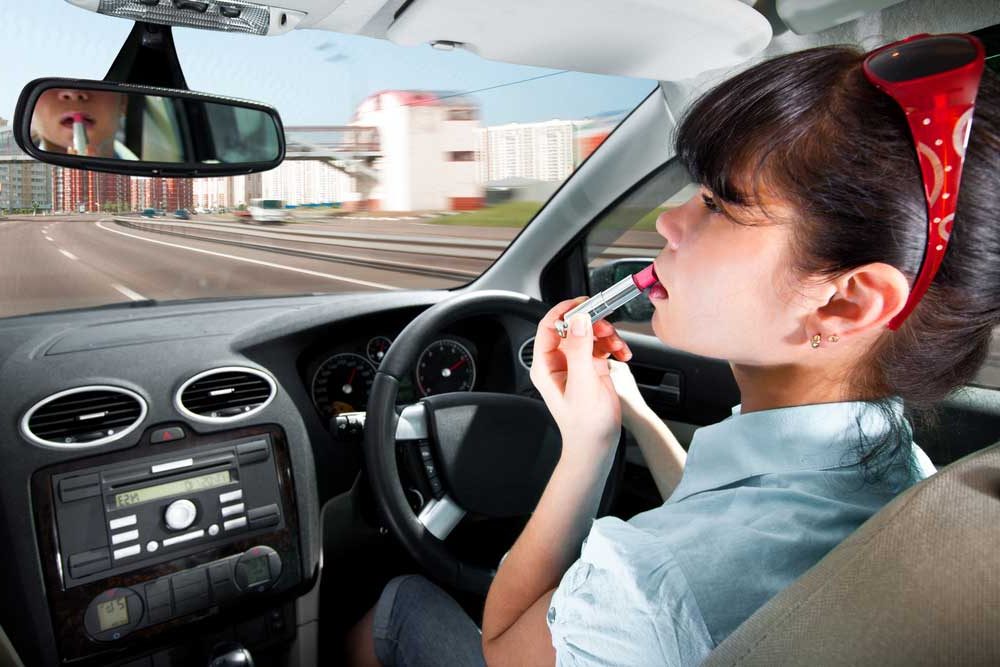
6 Driving Offences You Might Not Know Are Illegal
From driving without insurance to using your phone at the wheel, there are countless driving offences that are well known for being illegal. However, some motorists may be guilty of committing other driving offences without realising it. Here are 6 driving offences you might not know are illegal:
Overtaking at a pedestrian crossing
If you’re approaching a pedestrian crossing on a multi-lane road and a car is already stationary, it’s illegal to overtake it when the lights change to green. This law was introduced to protect pedestrians who might not be visible due to the stationary car blocking your view.
Flashing your lights for anything other than warning drivers of your presence
Some motorists commonly flash their lights to give way or to warn drivers of dangers on the road. However, the Highway Code states that drivers should only flash their lights if they need to alert other drivers of their presence and “Do not flash your headlights to convey any other message or intimidate other road users”. It has been reported that the Highways Agency claim that a breach could land people up in court but we doubt that to be the case. If however you flash your lights to warn other drivers of a speed camera you may face prosecution for police obstruction.
Using your phone as a sat nav without fixing it to the windscreen or dashboard
It is illegal to use a hand-held mobile as a sat nav when driving. To avoid breaking the law, your phone must be fixed to the windscreen or dashboard so that it’s in clear sight without having to be held.
Parking on the wrong side of the road at night
When parking at night, drivers must not park their cars facing against the direction of traffic. This law was introduced to prevent other drivers becoming dazzled by the parked car’s headlights. This rule also ensures that rear light reflectors are visible to oncoming cars.
Parking within 10 metres of a junction
Parking within 10 metres of a junction is considered against the law because other drivers may crash into the parked car while turning around a junction
Driving at more than 50mph in a van on a single carriageway road
Vans that are not car-derived must not exceed the following speeds:
- 50mph on single carriageways
- 60mph on dual carriageways
- 70mph on motorways
To speak to one of our experienced driving offence solicitors, please get in touch. We’re available around the clock so you can rest assured we’ll be on hand when you need us.
Read More
Who’s To Blame When Driverless Cars Crash?
In 2015, there were more than 186,209 casualties in reported road traffic accidents. Of these, 22,137 people were seriously injured and 1,732 died. With human error often blamed for the majority of car accidents, the rise in driverless vehicles is predicted to change our roads for the better and save lives in the process.
However, although self-driving cars are set to reduce the number of accidents on the roads, concerns have been raised regarding the ethics of self driving cars along with the impact they’ll have on the insurance and legal sector.
Can We Trust Machines to Get us From A to B safely?
Although experts predict that driverless cars will significantly reduce the number of casualties on our roads, self-driving vehicles can certainly make mistakes.
On the 7th May 2016, Joshua Brown died when his Tesla driverless car crashed into a lorry while on ‘autopilot’ mode. An investigation concluded that the car failed to apply the brakes due to an inability to distinguish between the white lorry and the sky.
Although Tesla noted that this was the first fatality in 130 million miles of autopilot driving, it certainly wasn’t the first accident. There have been numerous crashes involving self-driving cars, including a collision between a Google vehicle and a bus in February 2016.
A Google spokesperson said: “On February 14, our vehicle was driving autonomously and had pulled toward the right-hand curb to prepare for a right turn. It then detected sandbags near a storm drain blocking its path, so it needed to come to a stop. After waiting for some other vehicles to pass, our vehicle, still in autonomous mode, began angling back toward the center of the lane at around 2 mph and made contact with the side of a passing bus traveling at 15 mph.
“Our car had detected the approaching bus, but predicted that it would yield to us because we were ahead of it. Our test driver, who had been watching the bus in the mirror, also expected the bus to slow or stop. And we can imagine the bus driver assumed we were going to stay put. Unfortunately, all these assumptions led us to the same spot in the lane at the same time.”
Who’s to Blame When Driverless Cars Crash?
The uncertainty demonstrated in the example above highlights just how difficult it could be to determine who is responsible following a driverless car collision, particularly if a self-driving car collides with a vehicle operated by a human driver.
In the wake of an accident involving a self-driving car, police officers, lawyers and insurers will need to assess how much control the people within the car had over the vehicle. At present, Google’s cars are truly self-driving and the intention is that they need no human intervention. Tesla’s vehicles, however, do require some assistance.
When the owner of a Tesla filmed the moment his car collided with a van parked in the fast lane of a highway, he blamed both the driver of the parked van and his self-driving car for failing to react. However, as one particular comment on his Youtube video pointed out, the manual for the car in question warns drivers that the vehicle might not brake/decelerate for stationary vehicles, meaning some intervention is required.
The Tesla owner said: “Yes, I could have reacted sooner, but when the car slows down correctly 1,000 times, you trust it to do it the next time too.”
This highlights the importance for consistency and clarity. Drivers need to know whether they can trust their vehicle to react in the face of danger or whether they need to take control themselves. After all, if a driver doesn’t trust their car to move out of another vehicle’s way, they may intervene and make the situation even worse. The driver may swerve into oncoming traffic mere seconds before the car was programmed to react in a much safer way.
In an essay about pilots and automation, William Langewiesche writes: “Automation has made it more and more unlikely that ordinary airline pilots will ever have to face a raw crisis in flight – but also more and more unlikely that they will be able to cope with such a crisis if one arises.”
With different manufacturers programming their vehicles based on their own research, there’s also a risk that two self-driving vehicles may collide as a result of conflicting programming.
Why Are Self-Driving Cars an Ethical Minefield?
When humans are faced with a crisis, it’s only natural for panic to set in and impulse to take over. In contrast, machines aren’t going to react on an emotional level and should, in theory, respond in the way they’ve been programmed to.
However, although the mass-adoption of driverless cars should lead to calmer roads free from stress, fear and aggression, it could result in accidents that humans deem unethical.
For example, one ethics-related scenario that manufacturers are facing is whether to prioritise passengers or pedestrians in the event of a crisis. If a car was to turn around a sharp bend on a single lane road and a child was to step in front of the car, leaving the vehicle no time to break, should the car continue going forward and hit the child or should it swerve into oncoming traffic, putting the family and other motorists in danger.
Of course, this scenario would be difficult even if a human was in control of the vehicle. But when a machine is programmed to make a certain decision months before it occurs, fingers are likely to point towards manufacturers in the event of a severe or fatal crash.
Although experts are confident that self-driving cars will make the roads safer, when accidents undoubtedly do occur, whether it’s the result of poor programming, a malfunction or conflicting decisions from the machine and the driver, these collisions are sure to drum up concerns and make people question the safety of driverless vehicles. After all, statistics show that flying is by far the safest way to travel. Yet that doesn’t stop people worrying about their next flight in the wake of a high profile – yet rare – plane crash.
Read More
Mirror, Signal, Mascara: The Dangers Of Applying Makeup While Driving
From brushing your teeth in the shower to ironing your shirt while eating your breakfast, many of us multi-task in the morning so we can get ready that little bit faster. But although these household routines may be perfectly harmless, there are some common morning rituals that should never be combined such as using an electric razor or applying makeup while driving.
In March this year, a driver was pulled over by police for applying eyeliner while driving in the fast lane of the motorway.
A spokesperson for Cheshire Police said: “I can confirm that earlier today, officers from Cheshire Police stopped a motorist who was driving on the m56 after she was spotted applying eyeliner whilst driving. The motorist was issued with a Traffic Offence Report.”
Although the driver in question didn’t cause an accident, such reckless behaviour can have more serious consequences. In a 2009 poll of 4,000 women drivers, three per cent admitted to causing a collision when distracted by the contents of their makeup bag. On a wider scale, this equates to around 450,000 crashes a year.
Not only are these distracted drivers a danger to themselves, they also run the risk of causing a serious accident that could hurt or kill innocent motorists and pedestrians.
Here are just a few examples of the charges you may face if caught applying makeup in your rearview mirror:
Driving Without Due Care and Attention
Applying makeup while driving could be considered a failure to maintain proper control of a vehicle. Doing so could lead to a prosecution for driving without due care and attention. The prosecution would need to prove your driving had fallen below the expected standard.
If convicted, the penalty could range from three to nine penalty points on your licence or a discretionary disqualification. You may also face a financial penalty and be expected to cover court and prosecution costs. The offence is likely to be reported to your insurance company, potentially increasing your premiums for the future.
Dangerous Driving
If your driving is thought to be a danger to others as a result of you applying makeup at the wheel, you may be prosecuted for dangerous driving. You may experience a disqualification for a period of 12 months or more and in some cases, you could receive a custodial sentence.
Death By Careless or Inconsiderate Driving/Dangerous Driving
If your driving causes an accident in which someone is killed, you’re likely to face a much harsher penalty. Causing death by driving is divided into four offences, two of which can be considered applicable when applying makeup at the wheel:
- Causing death by dangerous driving
- Causing death by careless or inconsiderate driving
If you’re taken to court, the judge will consider how much you are to blame. For your offence to be considered ‘dangerous driving’ you will have had to have driven in a way that falls far below the standard of a careful competent driver. For your driving to be classed as ‘careless or inconsiderate’ your driving should have fallen below the standard of a careful competent driver.
Kevin Clinton from The Royal Society for the Prevention of Accidents says: “It should go without saying that applying makeup while driving is a dangerous thing to do. Driving requires concentration and even a momentary lapse could turn a near-miss into a serious or even fatal accident. Commonsense says apply makeup before or after driving.”
To speak to one of our experienced driving offence solicitors, please get in touch. We’re available around the clock so you can rest assured we’ll be on hand when you need us.
Read More